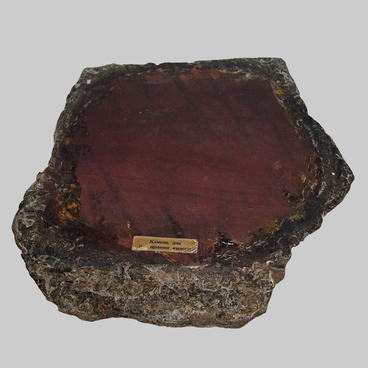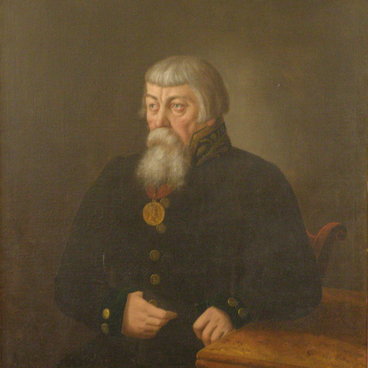The portrait of the young girl was painted by Lev Sveshnikov, a student of Stupin School of Painting. Fine art experts believe that she was his niece.
At the turn of the 18th– 19th centuries Arzamas was going through the largest economic boom in its history. The city was located at the crossing of many trading routes, the most important being Moscow, Nizhny Novgorod, Simbirsk and Saratov roads. Arzamas was playing a key role in the trade of the central and Volga regions of Russia. The city had tanneries, fur, textile, blacksmith, saddler’s shops and factories and ironworks. Soon the architectural center of the city was formed and construction of churches started.
The economic prosperity of Arzamas was an important factor contributing to a successful establishment of a school of painting by artist Alexander Stupin. It was opened in 1802. And was the first artistic education establishment in Russia. It became the rare example of the academic model of artistic education in provincial Russian cities. Stupin’s initiative helped promote professional artistic education in provinces. Alexander Stupin was awarded with the Order of Saint Anna III class for establishing the school, and the Order of Saint Vladimir IV class for his contribution to the development of Russian painting.
At the turn of the 18th– 19th centuries Arzamas was going through the largest economic boom in its history. The city was located at the crossing of many trading routes, the most important being Moscow, Nizhny Novgorod, Simbirsk and Saratov roads. Arzamas was playing a key role in the trade of the central and Volga regions of Russia. The city had tanneries, fur, textile, blacksmith, saddler’s shops and factories and ironworks. Soon the architectural center of the city was formed and construction of churches started.
The economic prosperity of Arzamas was an important factor contributing to a successful establishment of a school of painting by artist Alexander Stupin. It was opened in 1802. And was the first artistic education establishment in Russia. It became the rare example of the academic model of artistic education in provincial Russian cities. Stupin’s initiative helped promote professional artistic education in provinces. Alexander Stupin was awarded with the Order of Saint Anna III class for establishing the school, and the Order of Saint Vladimir IV class for his contribution to the development of Russian painting.
The art school in Arzamas existed for 45 years. The creative work of its many graduates made an important contribution to the development of the Russian art of the first half — mid-19th century. Such talented artists as Vasily Perov, Evgraf Krendovsky, Ivan Zaitsev, Vasily Raev and many others were graduates of the school. They later became famous artists and participated in the establishment of the Association of Itinerant Art Exhibitions.

